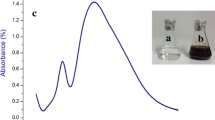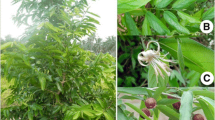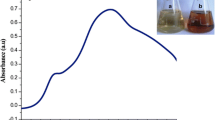Abstract
Dengue, a mosquito-borne viral infection, is one of the major public health concerns in the tropical and subtropical regions of the world. Approximately, 2.5 billion people across the world are at risk from dengue and 50 to 100 million new infections of dengue occur annually. There is yet no vaccine or medicine available against dengue, and treatment remains only supportive. Targeting its vector by a combination of biological and chemical approaches and management of breeding sites are currently the only existing approaches to control or eliminate dengue. Chlorophyll derivatives like chlorophyllin and pheophorbide have been reported as effective natural photosensitizers against larvae of several insects including flies. Chlorophyll derivatives were also reported effective against larval stages of freshwater snails as well as against certain parasites of fish. This article briefly discusses the possible application of chlorophyll derivatives in controlling dengue vectors and hence the disease itself. Chlorophyll derivatives can prove to be a good contributor in an integrated approach against dengue.

Similar content being viewed by others
References
Abdel-Kader MH, El-Tayeb TA (2012) Field implementation using chlorophyll derivatives with sunlight for malaria, filaria and dengue fever vectors control in infested Africa swamps. Malaria Journal 11(Suppl 1):P42. doi:10.1186/1475-2875-11-S1-P42
Arunachalam N, Tana S, Espino F, Kittayapong P, Abeyewickreme W et al (2010) Ecobio-social determinants of dengue vector breeding: a multicountry study in urban and periurban Asia. Bull World Health Organ 88:173–184
Awad HH, El-Tayeb TA, Abd El-Aziz NM (2008) A semi-field study on the effect of novel hematoporphyrin formula on the control of Culex pipiens larvae. J Agric Soc Sci 4: 85–88
Barrera R, Amador M, Clark GG (2006) Ecological factors influencing Aedes aegypti (Diptera: Culicidae) productivity in artificial containers in Salinas, Puerto Rico. J Med Entomol 43:484–492
Ben Amor T, Jori G (2000) Sunlight-activated insecticides: historical background and mechanisms of phototoxic activity. Insect Biochem Mol Biol 30:915–925
Ben Amor T, Bortolotto L, Jori G (2000) Porphyrins and related compounds as photoactivatable insecticides. 3. Laboratory and field studies. Photochem Photobiol 71:124–128
Bhatt et al (2013) The global distribution and burden of dengue. Nature 496(7446):504–507
Brandis AS, Salomon Y, Scherz, A (2006) Chlorophyll sensitizers in photodynamic therapy In: Chlorophylls and Bacteriochlorophylls, pp. 461–483. Springer
Chen X, Xu H, Wang Y, Hu S, Zhang Z et al (2007) Study on active oxygen quantum yield, insecticidal activities and stability of diphenylthiophene. Agric Sci China 6(458):465
Dondji B, Duchon S, Diabate A, Herve JP, Corbel V, Hougard JJ et al (2005) Assessment of laboratory and field assays of sunlight-induced killing of mosquito larvae by photosensitizers. J Med Entomol 42:652–656
Dosdall LM, Galloway MM, Arnason JT (1992) Toxicity and residual action of the photoactivated compound, cyano-alpha-terthienyl, and its efficacy for reducing pre-imaginal populations of mosquitoes. J Am Mosq Control Assoc 8:166–172
El-Tayeb TA, Abd El-Aziz NM, Awad HH (2013) A study on the dynamics of Aedes caspiuslarval uptake and release of novel haematoporphyrin. Afr Entomol 21:15–23
Endy TP, Anderson KB, Nisalak A, Yoon IK, Green S, Rothman AL, Thomas SJ, Jarman RG, Libraty DH, Gibbons RV (2011) Determinants of inapparent and symptomatic dengue infection in a prospective study of primary school children in Kamphaeng Phet, Thailand. PLoS Negl Trop Dis 5:e975
Erzinger GS. Wohllebe S, Vollrath F, Souza SC, Richter P, Lebert M, et al (2011) Optimizing conditions for the use of chlorophyll derivatives for photodynamic control of parasites in aquatic ecosystems. Parasitol Res 109:781–786
Erzinger GS, Häder D-P, Richter P, Carolina S, Wohllebe S (2013) New perspectives for the control of mosquito larvae using chlorophyll derivates as photosensitizers. Environment and Health Conference, Basel, Switzerland. Abstract Number: 2972 | ID: O-1-12-01
Gubler DJ (1998) Dengue and dengue hemorrhagic fever. Clin Microbiol Rev 11:480–496
Gubler DJ (2011) Prevention and control of Aedes aegypti-borne disease: lesson learned from past successes and failures. Asia Pacific J Mol Biol Biotechnol 19:111–114
Halstead SB (1988) Pathogenesis of dengue: challenges to molecular biology. Science 239:476–481
Heaton JW, Marangoni AG (1996) Chlorophyll degradation in processed foods and senescent plant tissues. Trends Food Sci Technol 7:8–15
Killeen GF, Fillinger U, Kiche I, Gouagna LC, Knols BGJ (2002) Eradication of Anopheles gambiae from Brazil: lessons for malaria control in Africa? Lancet Infect Dis 2:618–627
Lucatoni L, Magaraggia M, Lupidi G, Ouedraogo RK, Coppellotti O, Esposito F, et al (2011) Novel, meso-substituted cationic porphyrin molecule for photo-mediated larval control of the dengue vector Aedes aegypti. PLoS Negl Trop Dis 5:e1434. doi:10.1371/journal.pntd.0001434
Mahmoud MS, Richter P, Shalaby HAM., Kandil OM, Häder D-P (2013) Molluscicidal activity of chlorophyll extraction against the freshwater snails. J Coast Life Med 1:85–88
Medronho RA, Macrini L, Novellino DM, Lagrotta MT, Camara VM et al (2009) Aedes aegypti immature forms distribution according to type of breeding site. Am J Trop Med Hyg 80:401–404
Ooi EE, Goh KT, Gubler DJ (2006) Dengue prevention and 35 years of vector control in Singapore. Emerg Infect Dis 12:887–893
Rasheed SB, Butlin RK, Boots M (2013) A review of dengue as an emerging disease in Pakistan. Public Health 127:11–17
Richter PR, Strauch SM, Azizullah A, Häder D-P (2014) Chlorophyllin as a possible measure against vectors of human parasites and fish parasites. Front Environ Sci 2:18. doi:10.3389/fenvs.2014.00018
Rodhain F, Rosen L (1997) Mosquito vectors and dengue virus–vector relationships. In: Gubler DJ, Kano G, eds. Dengue and dengue haemorrhagic fever. CAB International Wallingford, Oxon, UK: 45–60
Savage HM, Fritz CL, Rutstein D, Yolwa A, Vorndam V, Gubler DJ (1998) Epidemic of dengue-4 virus in Yap State, Federated States of Micronesia, and implication of Aedes hensilli as an epidemic vector. Am J Trop Med Hyg 58:519–524
Shao G, Jiang DX, Xu HH, Zeng W, Yu HJ et al (2010) Synthesis and photoactivated insecticidal activity of tetraethynylsilanes. J Photochem Photobiol B 98:52–56
Simmons CP, Farrar JJ, van Vinh Chau N, Wills B (2012) Dengue. N Engl J Med 366:1423–1432
Strickman D, Kittayapong P (2003) Dengue and its vectors in Thailand: calculated transmission risk from total pupal counts of Aedes aegypti and association of wing-length measurements with aspects of the larval habitat. Am J Trop Med Hyg 68:209–217
Tian Y, Wei X, Xu H (2006) Photoactivated insecticidal thiophene derivatives from Xanthopappus subacaulis. J Nat Prod 69:1241–1244
Tun-Lin W, Lenhart A, Nam VS, Rebollar-Tellez E, Morrison AC et al (2009) Reducing costs and operational constraints of dengue vector control by targeting productive breeding places: a multi-country non-inferiority cluster randomized trial. Trop Med Int Health 14:1143–1153
WHO (2009) Dengue: guidelines for diagnosis, treatment, prevention and control. WHO/HTM/NTD/DEN/2009.1. World Health Organization
WHO (2012) Global strategy for dengue prevention and control 2012–2020. World Health Organization. ISBN 978 92 4 150403 4
WHO (2014) Dengue and severe dengue. Fact sheet N°117. World Health Organization. http://www.who.int/mediacentre/factsheets/fs117/en/
Wohllebe S (2010) Bekämpfung von Parasiten in aquatischen Ökosystemen mittels natürlicher Photosensitizer. Ph.D. thesis, University of Erlangen, Erlangen, Germany
Wohllebe S, Richter R, Richter PR, Häder D-P (2009) Photodynamic control of human pathogenic parasites in aquatic ecosystems using chlorophyllin and pheophorbid as photodynamic substances. Parasitol Res 104:593–600
Wohllebe S, Ulbrich C, Grimm D, Pietsch J, Erzinger G, Richter R, Häder D-P (2011) Photodynamic treatment of Chaoborus crystallinus larvae with chlorophyllin induces necrosis and apoptosis. Photochem Photobiol 87:1113–1122
Wohllebe S, Richter P, Häder D-P (2012) Chlorophyllin for the control of Ichthyophthirius multifiliis (Fouquet). Parasitol Res 111:729–733
Acknowledgments
This study was not financially supported by any organization.
Conflict of interest
The authors declare no conflict of interest.
Author information
Authors and Affiliations
Corresponding author
Rights and permissions
About this article
Cite this article
Azizullah, A., Rehman, Z.U., Ali, I. et al. Chlorophyll derivatives can be an efficient weapon in the fight against dengue. Parasitol Res 113, 4321–4326 (2014). https://doi.org/10.1007/s00436-014-4175-3
Received:
Accepted:
Published:
Issue Date:
DOI: https://doi.org/10.1007/s00436-014-4175-3




